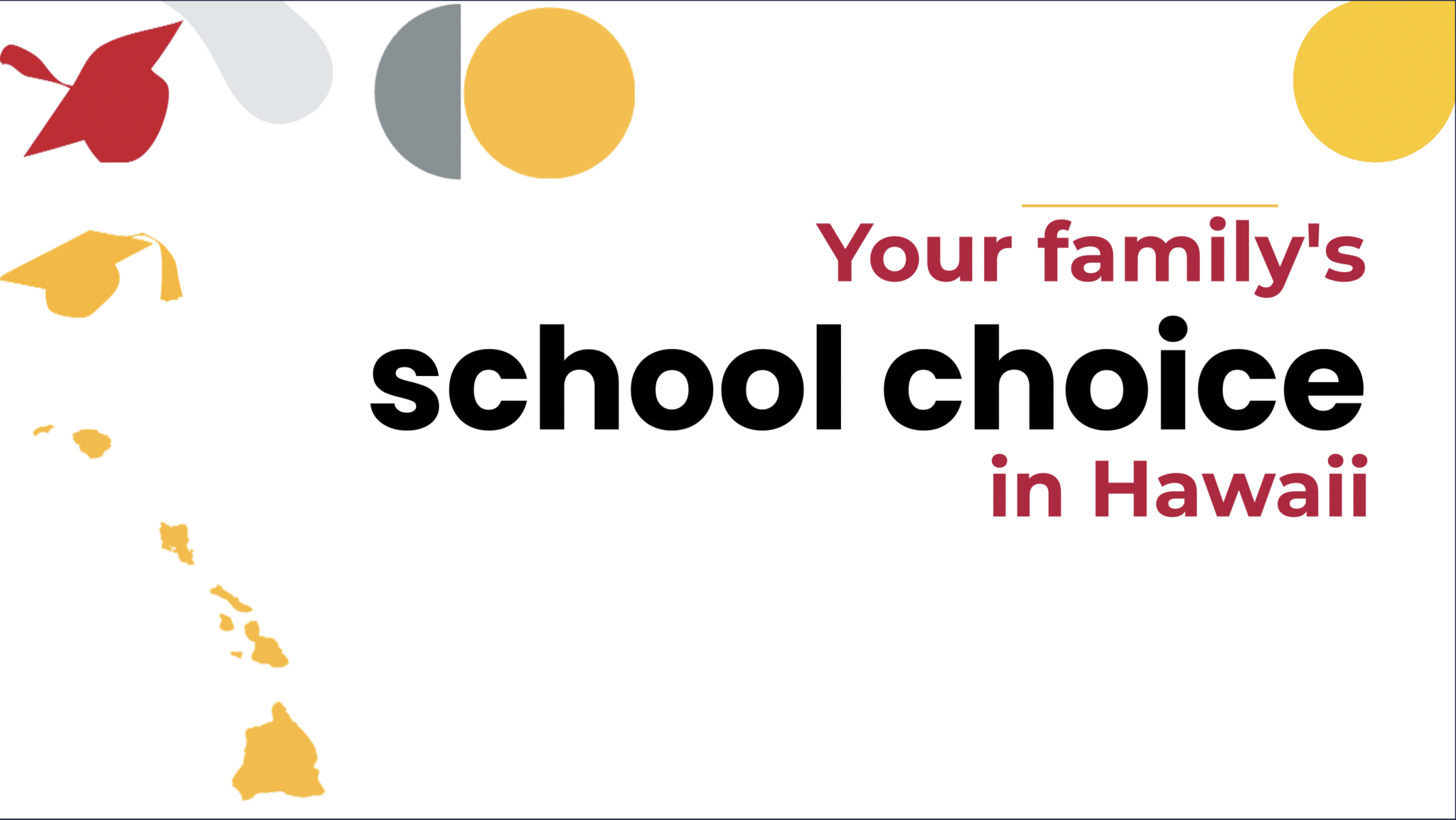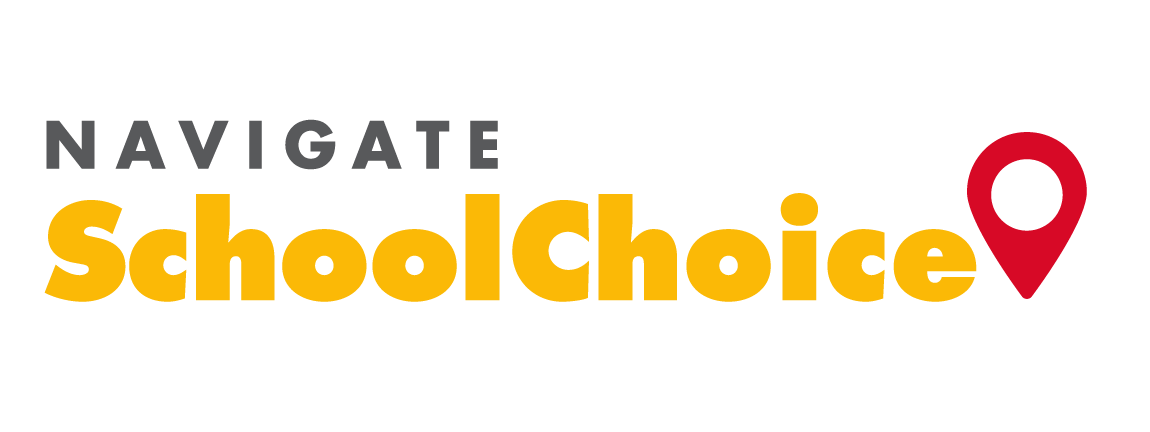Choosing a school? You’ve got options.
The “best” school looks different for each family. After all, your child has a unique personality, academic strengths, and interests. That being the case, knowing your K-12 options in Hawaii can help you choose a great school for your child with confidence. This post will breakdown the main types of school choice in Hawaii, as well as provide some extra resources.
In short, Hawaii families can choose from traditional public schools, public charter schools, private schools, online learning, homeschooling, and microschooling and mix-and-match learning.
Looking for special education options? You can learn what special education services are available in Hawaii at the Ultimate Guide to Special Education.

- Traditional Public Schools
- Public Charter Schools
- Public Magnet Schools
- Private Schools
- Online Schools
- Homeschool
- Microschooling
Hawaii Traditional Public Schools
Most children (74.4%) in Hawaii attend traditional public schools. Traditional public schools are free to attend, open to all students, operated by school districts, and funded by federal, state, and local government. In Hawaii, the state spends an average of $16,550 per public school pupil each year. You can search your school’s spending and that of nearby schools at Project Nickel.
Each state has different open enrollment laws for public school. These laws determine whether parents can choose to send their child to any traditional public school, such as a school outside their neighborhood. In Hawaii, the state operates as a single school district divided into 15 “complex areas.” Hawaii parents should contact the state education agency about its open enrollment policies, and whether they can consider schools outside their assigned area. A “geographic exception” transfer may be allowed, for example, if a student wishes to attend a public school with a special program of study not offered in their home school. Hawaii public schools are not allowed to charge tuition for transfer students.
Open enrollment is a valuable choice for parents because it gives families access to more free, public school options. Traditional public schools aren’t all the same; they may differ in learning methods and one may be a better fit than another for your child.
Find out more about public schools in your state at the Hawaii State Department of Education and more about Hawaii open enrollment at “Public Schools Without Boundaries: A 50-State Ranking of K-12 Open Enrollment.”
Hawaii Charter Schools
Depending on where you live in Hawaii, you may have another public school option in charter schools. Charter schools are tuition-free public schools that are allowed extra freedom to innovate with curriculum and learning methods.
Hawaii passed charter school legislation in 1994. As of 2019, Hawaii had more than 35 charter schools that families could choose from serving 5.9% of all K-12 students. You can find a list of Hawaii’s charter schools on the Hawaii State Department of Education website. One of the newest charter schools approved by the Public Charter School Commission is Namahama School, which plans to open in 2025. Opening fall 2024 in Kalihi on O’ahu is a a new data science and AI-themed charter school, Kūlia Academy.
Each school has a charter which explains the school’s purpose and what specific community need it serves, whether that be providing a language immersion program or offering a rigorous, literacy-based curriculum. If there are more families seeking admittance to a charter school than there are seats, a lottery system is usually used to determine admittance.
Students with special needs who have an Individualized Education Program (IEP) are eligible to receive transportation assistance.
Hawaii Magnet Schools
In most states, families can also choose magnet schools. These are free public schools that allow kids to narrow in on a specific learning track, such as engineering or the performing arts. At a magnet school, all the subjects are taught through the lenses of that specific track. Unfortunately, there are no freestanding public magnet schools currently in operation in Hawaii. There may be magnet programs in traditional public schools, and the law allows for independent magnet schools, so stay tuned in the future!
Also, while not technically magnet programs, Hawaii does offer supplementary programs for gifted and talented students.
Hawaii Private Schools
Families in Hawaii can also consider private schools, nonpublic schools that charge tuition. In Hawaii, 18% of all K-12 students attend a private school. Private schools may offer a unique curriculum, smaller class sizes, or a faith-based tradition. Hawaii’s more than 120 private schools come in all shapes and forms, from religious schools to schools designed for children with special needs. Hawaii’s largest private school, Punahou School, enrolls more than 3,700 students.
The average tuition for private schools in the state is $14,213 for elementary schools and $17,509 for high schools. Unfortunately, in Hawaii there are not currently any state-run scholarships to help families with the cost of private school, though private scholarships may be available. Additionally, families can save for K-12 private school tuition using tax-preferred 529 savings accounts.
Learn more at the Catholic Diocese of Honolulu School Directory and Private School Review: Hawaii.
Hawaii Online Learning
High school and middle school students enrolled in any traditional public or charter school can take up to two online courses for free through the Hawaii Virtual Learning Network – Hawaii Online Courses (formerly known as the Hawaii E-School).
Additionally, parents who would like to enroll their student in an online school full-time can hire a private provider. Paid options such as George Washington University Online High School, The Keystone School, Excel High School, and K12 Private Academy are available in any state, including Hawaii.
Finally, there are blended learning options for Hawaii families statewide. These include Hawaii Technology Academy, which is Hawaii’s largest statewide public charter school, and Myron B. Thompson Academy, an accelerated curriculum charter school and extension of Hawaii’s Virtual Learning Network that operates through campuses on Kauai, Oahu, Maui, Hawaii-Kona, and Hawaii-Hilo.
To read more about online learning in Hawaii, check out the Digital Learning Collaborative’s state profile.
Hawaii Homeschooling
Homeschooling is another school option. Homeschooling is the process of parents educating students at home and is permitted in all 50 states. As both technology and school choices have spread in Hawaii, homeschooling is an increasingly popular choice with more support and resources than ever.
In Hawaii, 1.8% of all K-12 students are homeschooled. Hawaii does not require homeschooling parents to teach specific subjects but does require a structured curriculum and some level of assessment. In general, children who are homeschooled may face roadblocks if they want to participate in public school sports in Hawaii. But, you can always look for other sports leagues and activities near you.
Also, Hawaii may have funding assistance available if you decide to homeschool through a charter homeschool program. If you decide to switch back to public school from homeschooling, be sure to submit notification to the principal of your zoned public school.
Find a great how-to about homeschooling in Hawaii at the Home School Legal Defense Association. You may also want to check out the Hawaii Homeschool Association and Christian Homeschoolers of Hawaii.
Hawaii Microschools and Mix-and-Match Learning
Today, many Hawaii families are mixing and matching school options to come up with new ways to personalize education. Microschools are one of these ways. A microschool refers to students gathering together in a small group – with adult supervision – to learn, explore, and socialize. Microschools can take a variety of shapes and legal forms, from homeschoolers coming together at an enrichment center to a private school committed to small classrooms. What microschools share in common is a commitment to small-group learning and close-knit relationships, along with an emphasis on children as individual learners.
Here is one example of an innovative microschool resource in Hawaii: Hawaii Kids Can has started an Ohana Pods initiative to connect and support families who are learning together either online or in-person.
Unfortunately, in general, families who have tried to start tuition-based microschools have faced legal roadblocks in Hawaii. You can hear the story of one group of parents whose Waldorf microschool was shut down at the LiberatED podcast.
Remember, microschooling is more a mentality than a specific legal distinction in most cases. Often, a family participates in a microschool while legally homeschooling, or being enrolled in a private or online school.
[nscw_school_finder]
Microschooling and Mix-and-Match Learning
How can it empower parents and help kids achieve their dreams?
7 Step Guide
Tips to help you find a school where your daughter or son will learn, succeed, and be happy.
Education Resources for
Hawaii Parents
For additional information about school choices in
Hawaii, visit these resources:
Every state is different when it comes to school choice options.
Sign up below to get a detailed comparison:
"*" indicates required fields

